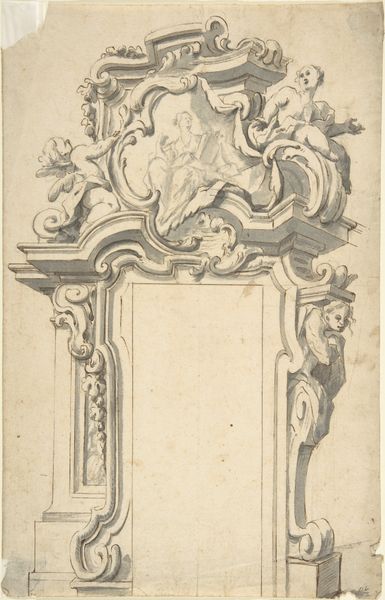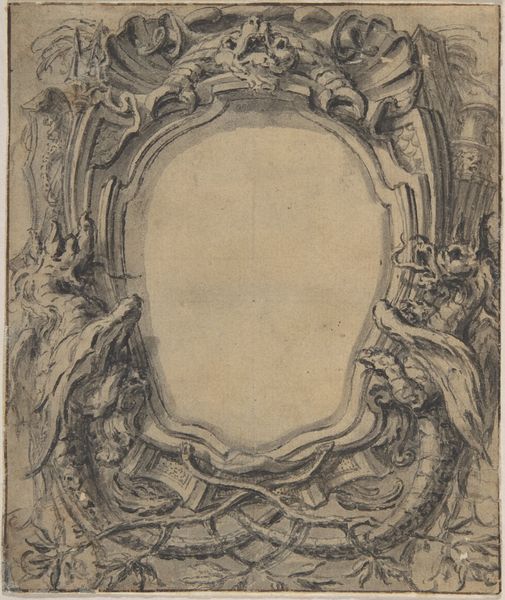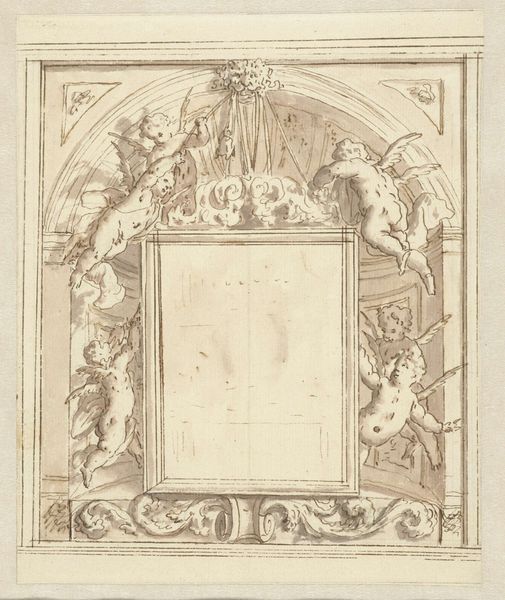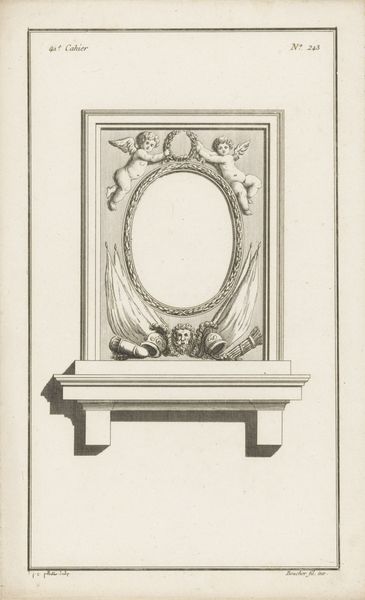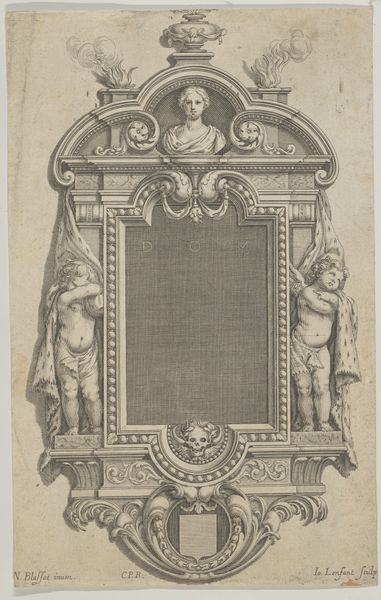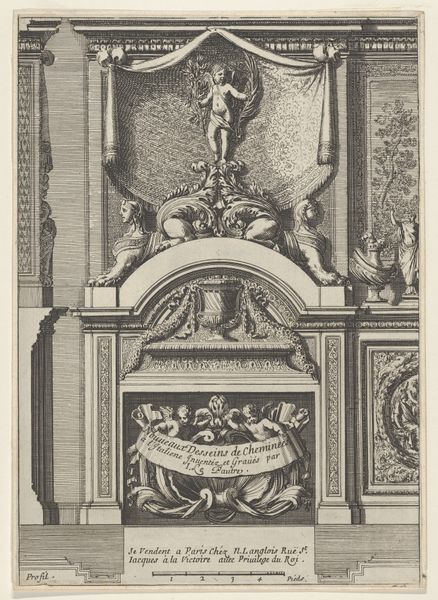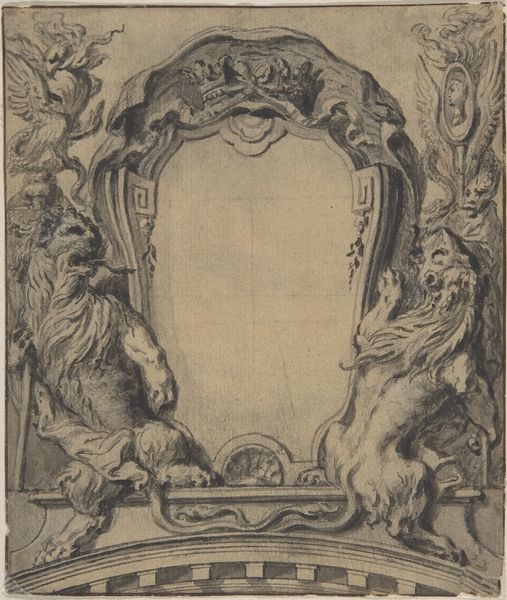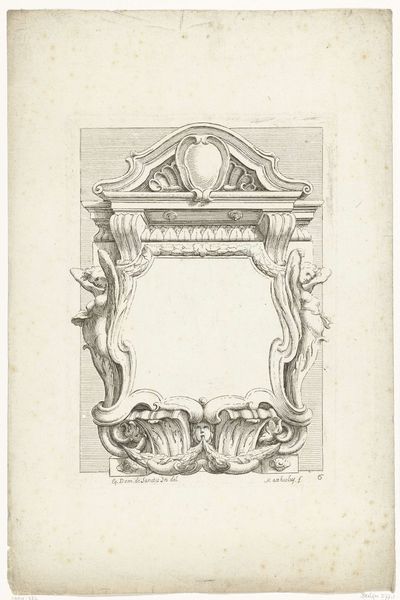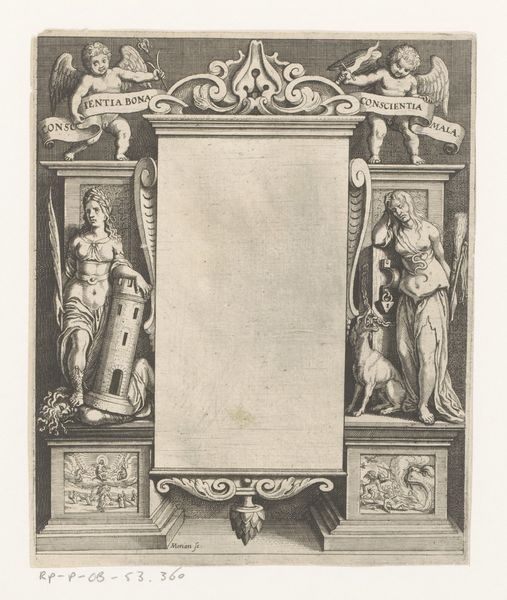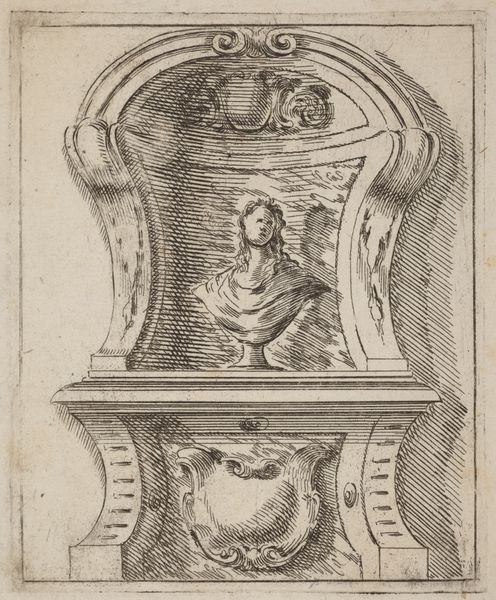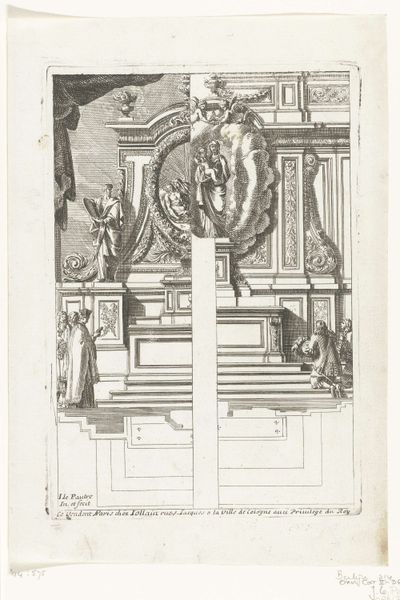
drawing, etching, ink
#
drawing
#
ink drawing
#
etching
#
landscape
#
classical-realism
#
etching
#
ink
#
history-painting
Dimensions: 11 1/4 x 8 3/4 in. (28.6 x 22.2 cm)
Copyright: Public Domain
Curator: Standing before us is "Cinerary Urn, after the Antique," attributed to Nicolas Poussin and created sometime between 1600 and 1900. It’s an ink drawing, showcasing meticulous detail. What strikes you first about this piece? Editor: The sheer volume of stuff! Eagles, roosters, floral garlands, even a grotesque face. It feels very loaded. There is much more decoration than one expects on such an object, one quickly thinks what are all of these elements made out of! Curator: Indeed, it speaks volumes about the era's fascination with classical antiquity and its attempt to resurrect its forms, as if piling on the motifs will somehow bring back the original meaning. But what did these symbols really represent, in this context, and who was the intended audience of its revival? Editor: Well, clearly not the working class. The elite probably. Poussin's drawing style emphasizes line and form, hinting at a tactile appreciation of sculpted surfaces and a connoisseur’s interest in collecting or commissioning something of the like. Curator: Precisely! Poussin worked in Rome, a hub of artistic patronage and a playground for the wealthy who acquired antiquities as status symbols, very much fueling a booming art market. He captured this object not just as an artwork, but as a component of a larger social narrative of wealth and taste. Editor: All those birds especially underscore a story of consumption, even class difference. Were those eagles supposed to represent nobility? Or some Roman militaristic ambition? It almost looks as if they're guarding something...maybe they're about to eat the chicken! Curator: This contrast of the eagle with fowl reflects a structured hierarchy. It presents viewers of the urn with established systems of value. What's crucial is not merely that it's an antique imitation, but how its symbolism could signal refinement and knowledge. Editor: I see your point. Though I remain stuck on what the materiality would feel like: would the stone be heavily textured to represent layers and relief, would that influence where it was set, was it all painted, or left plain stone? That all changes the statement it might make! Curator: Absolutely, understanding the reception of an artwork of the like goes much beyond the mere materials used. In conclusion, reflecting on how this Cinerary Urn signifies how artifacts function as social agents within given structures is just mind blowing. Editor: Yes, by studying its various details as part of artistic manufacture of value, the class relationships behind works of this like come more into the forefront, giving insight on much of this revival period's consumption habits.
Comments
No comments
Be the first to comment and join the conversation on the ultimate creative platform.
